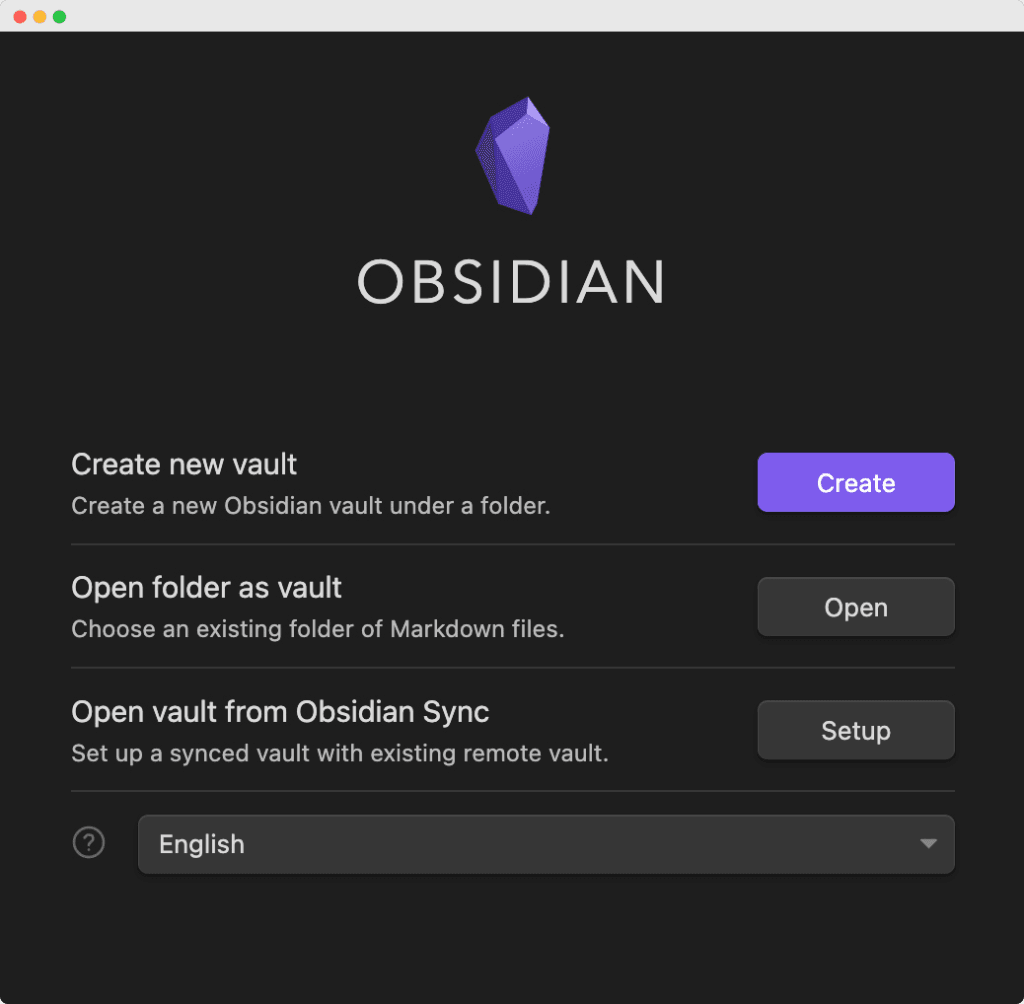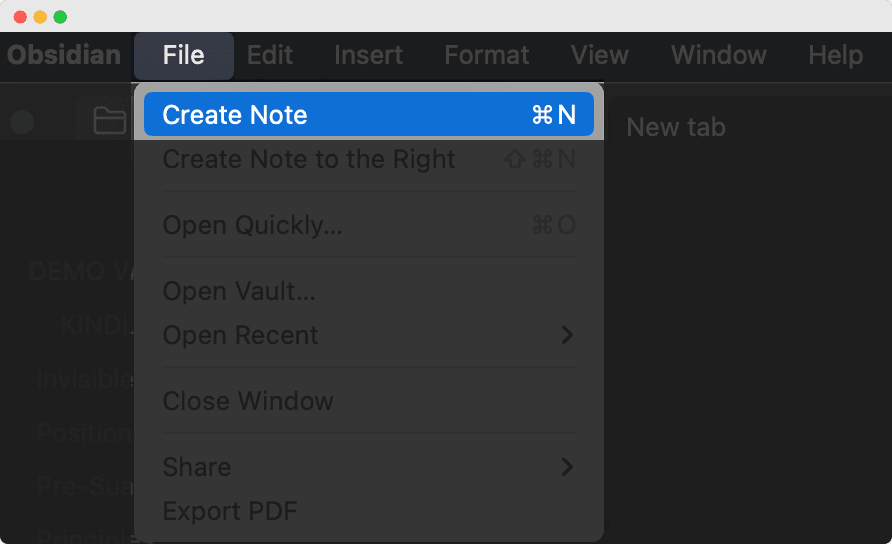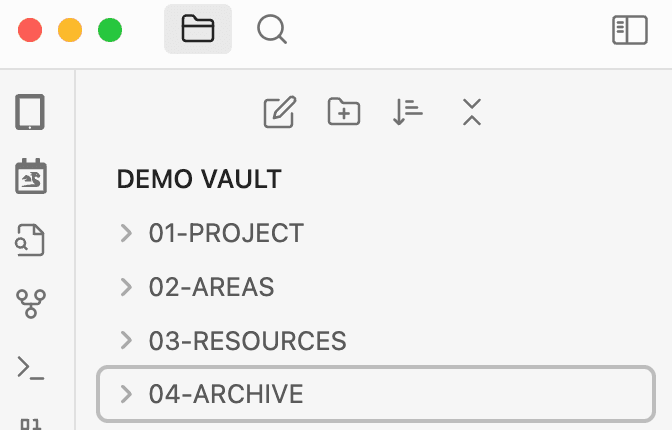If you want to build your second brain in Obsidian then this is the guide you’ve been waiting for.
In fact, I’m going to share with you exactly how to get started so that you can walk away from this article with actionable steps and duplicate your brain.
So let’s get started.
What’s a second brain, and why should you build one?
The idea of a second brain is not new.
In fact, one of the firsts who talked about second brains was Vannevar Bush.
But the idea of building a digital version of your brain comes from Tiago Forte. And when I asked him on my podcast what a second brain is, he answered that it’s nothing else than organizing digital information inside a note-taking app.
This is an interesting idea, especially if you’re an information junkie (like me a few years ago).You probably love to find new ideas and are always on the verge of learning and discovering new things. But you also might feel frustrated when you look back at all the notes you’ve taken without getting anything significant out of it.
This is exactly the type of people who should build their second brain in the first place.
Benefits of a second brain
There are multiple benefits of building a second brain. Here are some of them.
- Think better
- Retrieve information faster
- Remembering what you read
- Be able to create content faster
- Make connections between ideas
- …
Should you build a second brain or a zettelkasten in Obsidian?
Semantics matter.
If you’ve been researching online about second brains, you probably came across another barbarian word called the Zettelkasten method (or how to take smart notes).
In short, the Zettelkasten is focused on taking notes that are linked between them.
So your second brain could take advantage of the zettelkasten methodology.
Understanding the difference between second brain and zettelkasten is crucial before we get started.
Now that you know that a second brain is a way to centralize information into a note-taking app and that the zettelkasten is a note-taking methodology, let’s dive deeper into how to set this up in Obsidian.
Why building a second brain in Obsidian specifically?
Obsidian is a free note-taking app.
It has been built around one major feature: the ability to use backlinks. In short, Obsidian is not primarily geared toward tags and folders (although you can use them). It’s heavily focused on linking your notes together.
This is why Obsidian has significant advantages over other zettelkasten apps.
Future-proof Second Brain in Obsidian
Niklas Luhmann, the Zettelkasten grandpa, had written over 80 books using his Zettelkasten.
But did you also know that 14 were written after his death? How’s that possible? Simply because researchers could pull out a significant amount of information using his second brain.
You may or may not want others to have access to your knowledge. But one thing to keep in mind when building your digital second brain is that software changes fast.
So when you pick a note-taking app, you want to have peace of mind that the app will still be around next year.
Remember services like Myspace or Napster?
They vanished in a matter of months.
What could be more frustrating than losing your notes (or not being able to access them)?
Obsidian allows you to avoid all this dilemma because Obsidian works with plain-text files. Even if Obsidian vanished tomorrow, you’ll still be able to open and use your notes.
So when it comes to building your second brain, Obsidian is a future-proof way.
Obsidian is free
You may or may not want to pay a monthly subscription to maintain your second brain.
The great thing about Obsidian is that it’s a free note-taking app. Of course, there are some paid add-ons (like Obsidian Sync or Obsidian Publish), but those are not necessary at all.
Obsidian allows you to build your second brain across ALL platforms
The main competitive advantage of Obsidian is that it works on all major platforms.
On mobile, you can download their Android and iOS apps. On Desktop, you’ll find native apps for Windows, Mac, and Linux.
Obsidian is your “offline” second brain
Deep work doesn’t happen when you’re connected to the internet.
This is why productivity geeks use internet-blocking apps or unplug their routers when it comes to getting things done.
Unfortunately, most second-brain apps like Roam, Mem, whatsoever work online. We all know how easy it is to get distracted online. And I don’t like being forced to use the internet to work on my notes.
Obsidian allows me to build my second brain like the first one: on- and offline.
Are 99% Of Your Notes Going To Waste?
Let’s change that now!
✍️ Sign up for my FREE Email Course and learn how to Turn Your Notes Into Online Content & Monetize Your Expertise:
Your information is safe. You can unsub anytime.
How to set up Obsidian to be your second brain
Setting up your second brain in Obsidian does not have to be complicated.
In fact, you can boil it down to 3 simple steps:
1- Downloading and installing Obsidian
2- Setting up your Second Brain
3- Start creating your first note
So let’s dig deeper.
How (and where) to download Obsidian
Head over to Obsidian’s official website and download the app associated with your device.

Next, simply install it on your computer.
Setting up your second brain in Obsidian
Now, launch Obsidian.
You’ll have a window like this asking you to create a vault. This is the folder where your second brain will live on your computer.
If you don’t know how to name it, simply go for: Second Brain.

Click create.
Congrats, you now have your second brain ready to go in Obsidian.
Creating your first note in Obsidian
Now you can directly start creating your first note inside Obsidian.
Go to new > create new note.
That’s it.

Now it’s about to start taking notes that matter.
If you want more information about the note-taking mythology to use, click here and I’ll send you my free second brain email course.
Should you use PARA in your Obsidian Second Brain?
Many people ask about the folder structure in Obsidian.
And one of the most famous structures is PARA.
What is PARA?
PARA is an acronym that stands for Project, Areas, Resources, and Archive.
In short, it suggests creating 4 folders with those names inside Obsidian:

Don’t use PARA in Obsidian
Truth is, I don’t recommend using PARA inside Obsidian.
Here’s why: PARA is a great way to organize files, but not notes.
PARA limits your creativity when you’re looking to spark new insights and come up with better ideas. This is why you want to start with a flat folder structure (i.e: no folders at all)
I’m going more in-depth about the folder/tag structure inside my free second brain course that you can get by clicking here.
Obsidian second brain template
Many people think that you need templates to create your second brain.
Truth be told, that’s a useless distraction. Most people out there show you complicated workflows that are nothing else than confusing and prevent you from taking action. In fact, second-brain grandpa Niklas Luhman had a simple workflow. This is the secret that allowed him to be so prolific.
So stop following the productivity gurus, and follow people who got results with their systems.
Now that you’ve created your second brain in Obsidian, it’s time to use it!
Learn the ins and outs inside with my free email course below:
